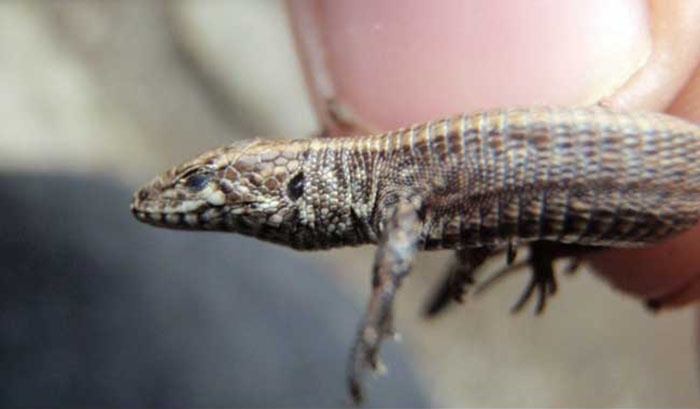Adams, who had recently graduated from Denison University with a degree in biology, was just hoping to find some scientific task to keep his resume up to date. He sent an email to a mailing list for ecologists, offering to collect data for them during his two-year stint in the Andes.
"My thing was plants," Adams told The Post. But no botanists were biting. Instead, he heard back from Tiffany Doan, a biologist from the University of Central Florida.
And Doan wanted reptiles.
"I had no interest in lizards or snakes at all, but it sounded like something fun I could do," Adams said. All Doan asked was that he keep an eye out for any creepy crawlers and send her pictures. If anything looked unfamiliar, she`d sound the alarm and they could start collecting them for further study.
Before long, they had their lizard: a species Doan had never seen before. In the Andes, they were so ubiquitous that Adams found several of them while out farming potatoes with his host family -- all of whom were more than familiar with the creatures. But it became obvious that the lizard had never been formally described.
But there was a problem.
By the time Adams and Doan were able to get permits to collect the lizards -- a necessary step to having them classified as a whole new species -- Adams only had one week left in the town. On the one hand, he was excited to get to his new post, where he`d be assisting researchers at the Peruvian Marine Institute. On the other, he had an obligation to help catalogue one strange little lizard.
"I was still finishing up some projects, so I didn`t have a lot of time," Adams said. "So I enlisted my community to help me collect the things. I put out some posters and asked my students, and in a week I had a whole bunch of them."
Adams admits he had to resort to bribery to get some community members on board: He tried to tempt them with chocolate candies but ultimately paid about a dollar a lizard out of his own pocket.
"That, uh, kind of hurt my living budget a little," he mused.
But lots of his younger students were happy enough to do it for the thrill of the hunt. One particular group of boys banded together to search all over the place.
In his "little dirt house," Adams set about euthanizing and preserving the lizards to send them off to Doan and researchers at local universities.
The small brown lizards are -- well, they look like small brown lizards. And in the community where Adams was living, they were nothing special. They were just the lizards. People mostly knew them as an ingredient in a folk remedy.
"They`ll splay the lizard and tie it to the injured area to help heal it," Adams said. "Actually, during the project, my host sister got hurt, and my host mother wanted one of my lizards to help her heal."
Doan`s studies formalized the lizard in the literature, and pointed out one potentially important feature: Although the lizards have complex spots and coloring variations (variations on brown, anyway) in life, they lose all of those variations once they`re preserved, turning a uniform dark brown. If someone had simply put a lizard into storage for later study, it could have led to an incorrect description of the species. But since Adams was there to document the living lizards, science can record the reptiles in living color.
These days Adams is at the University of Southern Mississippi. His run-in with Euspondylus paxcorpus may not have awakened a love of herpetology in him, but his Peace Corps assignment doing marine research proved to be a better fit -- he now studies marine biology.
"It`s going to be one of those lifelong stories, discovering a species," Adams said. "I`ll always carry that with me."
And hey, he added: As a young scientist, it`s always great to get your name on a publication.
More about:






















-1745485667.jpg&h=190&w=280&zc=1&q=100)

























